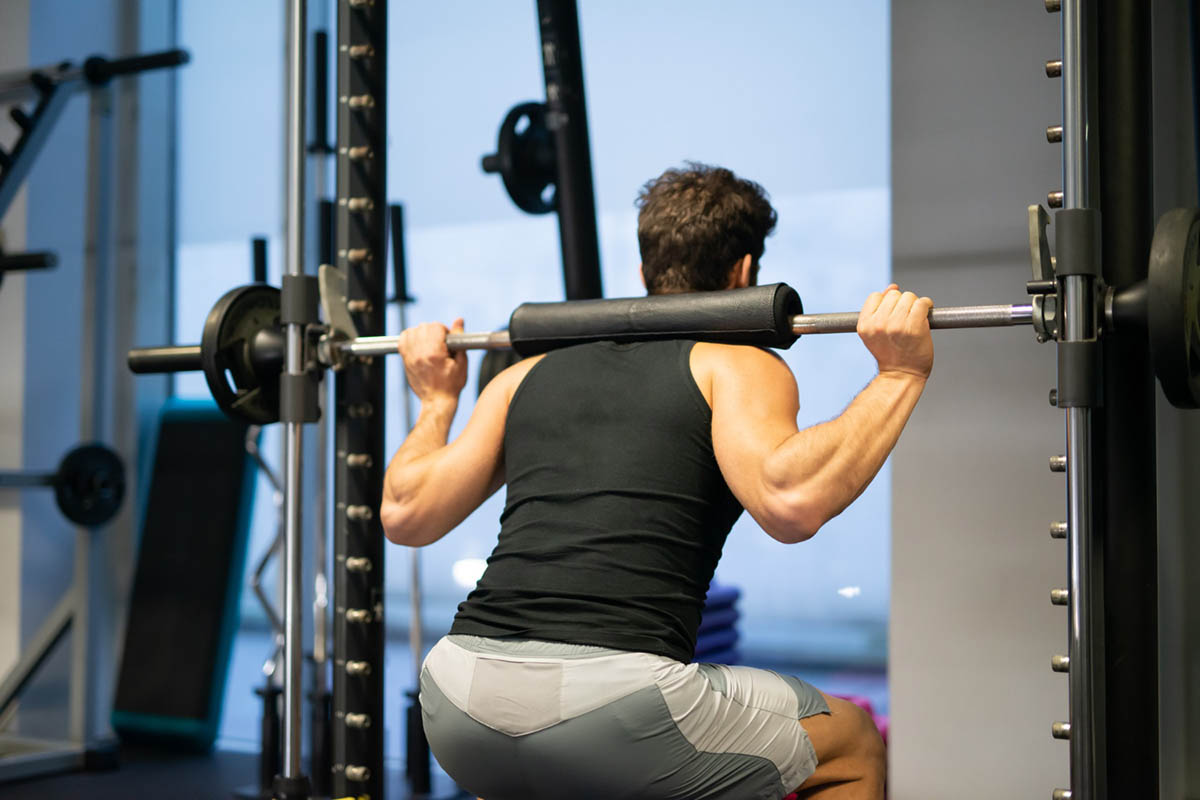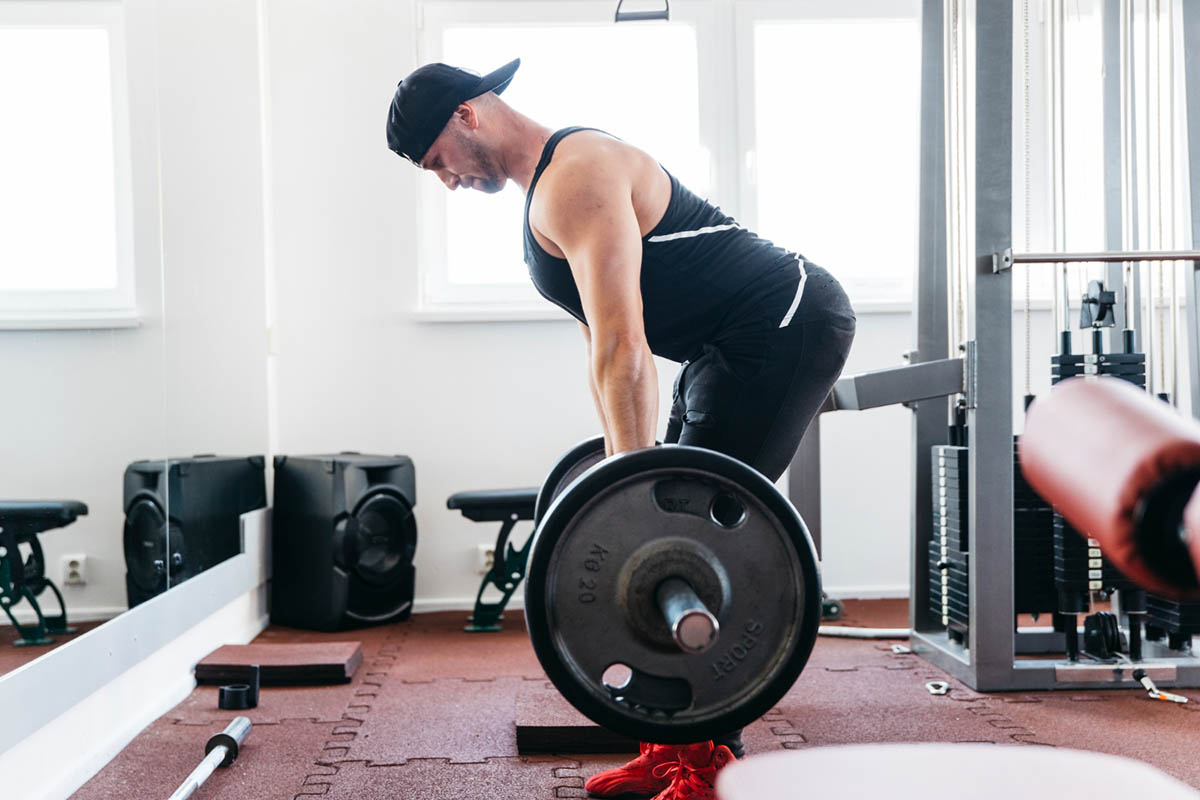Back pain during squats and deadlifts is common for many fitness enthusiasts, whether beginners or seasoned professionals. For many recreational athletes, pain often strikes in the lower back. Due to its significant load, the lower back is particularly prone to discomfort and injury during these compound movements. Understanding the reasons behind this pain and how to prevent it is crucial for maintaining a safe time-lifting regimen. Mitchell Holistic Health emphasizes addressing these issues through correct form and individualized care.
Understanding the Squat and Deadlift Movements
Understanding the mechanics of squats and deadlifts is essential to comprehend why pain with squats and deadlifts might occur.
The squat is a fundamental lower-body exercise that primarily targets the quadriceps, hamstrings, and glute muscles while also engaging the core exercises and lower back. During a squat, the lifter lowers their body by bending at the hips and knees while maintaining an upright position. The lower back muscles stabilize the spine throughout the movement, particularly during the ascent when the lifter pushes back to a standing starting position.
Another compound exercise, the deadlift, focuses on the posterior chain, including the hamstrings, gluteus maximus, and lower back. During a deadlift, the lifter bends at the hips, keeping the back straight and chest up, then lifts the barbell from the ground to hip level. The lower back is crucial in maintaining spinal compression and providing the necessary stability to lift the weight safely.
Both exercises demand proper form and technique, with the back playing a pivotal role in preventing injury and ensuring the lift is executed correctly.
Common Causes of Back Pain When Squatting and Deadlifting

Lower back pain when squatting can often stem from poor squatting technique, inadequate muscle strength, or muscle imbalances. Lower back pain when deadlifting or back pain from deadlifting can be particularly problematic. Addressing these underlying factors is essential for preventing discomfort and ensuring safe lifting practices.
Back Pain When Squatting
Experiencing back pain while squatting can often stem from poor technique, inadequate muscle strength, or muscle imbalances. Addressing these issues through proper technique and strengthening exercises like Glute Bridges can help alleviate discomfort and improve performance.
- Poor Squatting Technique: Incorrect Form is one of the most common reasons for back pain during squats. If the lifter fails to maintain a neutral position for the lumbar spine, the lower back can round excessively, placing undue stress on the lumbar region. Additionally, leaning too far forward can cause the weight to shift away from the center of mass, increasing the strain on the lower back.
- Squatting with Too Much Weight: Lifting heavier weights beyond one’s capacity can also lead to back pain. When the weight is too heavy, it becomes difficult to maintain proper form, which can cause the back to round or experience excessive lumbar extension. This excessive strain can lead to discomfort or even injury.
- Weak Core Muscles: The critical core muscles, including the abdominals and external obliques, play a crucial role in stabilizing the spine during a squat. If these muscles are weak, the lower back compensates by taking on more load, which can lead to muscle strain and injury over time.
- Previous Injury to the Back: If you’ve previously injured your back, the risk of experiencing pain after squats increases. Scar tissue, reduced ankle dorsiflexion range, or lingering strained muscles can make it difficult to perform the exercise without discomfort.
Back Pain When Deadlifting
Experiencing back pain from deadlift often results from deadlift technique issues, excessive weight, or insufficient core strength. These factors can lead to improper spinal flexion and increased strain on the lower back, causing discomfort during the lift.
- Improper Deadlift Form: Like squats, improper form during deadlifts is a primary cause of back pain. Rounding the back, especially during the initial pull, can strain the facet joints and muscles excessively, leading to sharp pain.
- Improper Shoulder Position: Another common issue is improper shoulder positioning. If the shoulders are not properly retracted and depressed, the upper back rounds and the lower back is forced to bear more of the load, increasing the risk of injury.
- Arching the Lower Back: While maintaining a neutral spine is essential, some lifters overcompensate by excessively arching their lower back during deadlifts. This hyperextension can compress the spinal discs and cause lower back pain.
- Hyperextending the Back: Some individuals tend to hyperextend their back to lock out the movement at the top of the deadlift. This hyperextension places unnecessary stress on the lower back, leading to pain or injury.
- Delayed-Onset Muscle Soreness (DOMS): DOMS is a common experience after performing intense exercises like deadlifts. While some muscle soreness is normal, excessive pain, particularly in the lower back, can indicate improper form or overtraining.
- Muscle Sprain/Strain: Lifting heavy weights with improper form can lead to muscle sprains or strains in the lower back. These injuries occur when the muscles are overstretched or torn, resulting in pain, stiffness, and reduced mobility.
- Overtraining: Overtraining is another factor that can lead to back pain. When the body doesn’t have enough time to recover between sessions, the muscles, including those in the lower back, can become fatigued and more susceptible to injury.
- Excessive Load and Intensity
- Lifting too heavy or frequently without proper progression can overload the back muscles, leading to pain and injury. It’s crucial to gradually increase the weight and intensity of your lifts to allow your body to adapt safely.
How to Prevent Back Pain When Squatting and Deadlifting
Preventing back pain during squats and deadlifts involves a combination of proper technique, adequate preparation, and listening to your body.
Proper Warm-Up
A thorough warm-up is essential before any lifting session. Warming up increases blood flow to the muscles, improves joint mobility, and prepares the body for the demands of heavy lifting. Incorporate dynamic stretches, such as leg swings and hip circles, and perform lighter squats and deadlifts to prime your body for the main lifts.
Proper Technique and Form
Correct technique is vital for avoiding back pain. Focus on maintaining proper form during your lifts.
How to Squat Properly
To ensure proper squatting form, maintain a neutral spine and avoid any excessive rounding or arching of your back. Engage your core by tightening your abdominal muscles, which will help stabilize your spine throughout the movement. Concentrate on driving through your heels as you rise from the squat; this technique enhances balance and prevents you from leaning forward. Additionally, keeping your chest up and your torso upright minimizes strain on your lower back, promoting a safer lifting experience.
How to Maintain Good Form When Deadlifting
When executing a deadlift, prioritize hinging at the hips to initiate the movement, as this helps to prevent excessive stress on the lower back. Ensure the barbell remains close to your body throughout the lift, which minimizes strain on your back muscles. Additionally, actively engage your lats by retracting and depressing your shoulder blades to stabilize your upper back, providing better support during the lift. Finally, be cautious to avoid hyperextending your back at the top of the lift; maintain a neutral spine without leaning back excessively, securing a safe and effective movement.
Rest
Rest and recovery are vital components of any exercise program. They allow the body to repair and strengthen itself between workouts, reducing the risk of injury. Ensure you get enough sleep and rest between intense lifting sessions to allow your muscles, including those in your lower back, to recover fully.
Strengthen Core Muscles
A strong core stabilizes the spine and prevents lower back pain. Incorporate exercises like planks, dead bugs, and bird dogs into your routine to strengthen your core muscles and improve your stability during squats and deadlifts.
Improve Ankle and Hip Mobility
Limited mobility in the ankles and hips can force the lower back to compensate during squats and deadlifts, leading to pain. Regularly perform mobility exercises, such as ankle circles and hip flexor stretches, to improve your range of motion and reduce the strain on your back.
Listen to Your Body
Pay attention to any signs of discomfort or pain during your lifts. If you feel pain in your lower back, stop the exercise and assess your form. It’s better to adjust your technique or reduce the weight than to push through the pain and risk injury.
When to Seek Professional Help

If you continue to experience recurring back pain despite using correct techniques and taking preventive steps, consider consulting a healthcare professional. Addressing ongoing discomfort before it escalates into a more serious issue is important.
Recognizing Serious Injuries:
Back pain that persists for more than a few days worsens with activity or is accompanied by symptoms like numbness, tingling, or weakness in the legs. These symptoms may indicate a more serious injury, such as a herniated disc or spinal misalignment.
Consulting a Physical Therapist or Trainer:
A good physical therapist, especially in areas like physical therapy Onalaska WI, can help diagnose the root cause of your back pain and develop a personalized rehabilitation plan. Across all elite athletes, the lifetime prevalence of BP was 85%, the 12-month prevalence was 75%, the 3-month prevalence was 58%, and the point prevalence was 38%. Working with a certified trainer can also help you refine your form and ensure you’re lifting safely and effectively.
Conclusion
Back pain during squats and deadlifts is a common issue that can be mitigated with proper strength, correct technique, adequate preparation, and listening to your body. By understanding the causes of back pain and implementing the strategies outlined above, you can continue to perform these valuable exercises while minimizing the risk of injury. And remember, if the pain persists, seeking professional help from a medical professional or trainer is always wise. Your long-term health and fitness are worth the investment.

